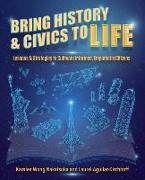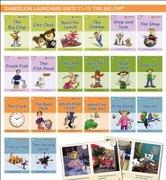Bring History & Civics to Life
BücherAngebote / Angebote:
This user-friendly guide will empower and equip teachers to take a fun, interactive approach to using technology to teach history and civics. For years, history and civics have been put on the back burner as schools focus on subjects like math, science and English language arts. Although all U.S. states have standards for the teaching of history, there's a lack of consistency when it comes to teaching civics. Today, we see evidence of declining levels of civic engagement, which is sadly reinforced as our educational institutions fail to prioritize history and civics education, while at the same time they often blame students for their lack of knowledge. Amid this backdrop, how can educators better prepare their students to become engaged, informed and empathetic citizens? One way is by harnessing the power of digital learning to make history come alive for students, establishing a climate and culture that encourages students to be effective collaborators and lifelong learners who care about and contribute to society. With this book, two dynamic, award-winning educators draw clear connections between history, civics, community - and technology - in meaningful and actionable ways to deepen students' understanding of democratic processes and civic engagement. Using edtech and instructional design as entry points, the book highlights pedagogically sound practices to build critical thinking skills, and offers classroom examples from a wide range of educators to show how to implement these strategies in the classroom. The book: Illustrates how to use educational technology as a means to inspire and enable students to become empathetic, informed citizens. Emphasizes historiography and critical-thinking skills across the curriculum and broader community. Demonstrates how to integrate digital learning tools and strategies across history curriculum. Provides guidance on amplifying student voice and inspiring student civic engagement with students as knowledge constructors and global citizens. Prioritizes equity in learning by highlighting accessibility features of educational technology tools and implementation strategies to benefit all learners. In these pages, you'll discover how to use educational technology to help students recognize themselves in history and experience the world - and learn - in ways that only technology allows. Audience: Grades 4-12 history/social science and civics teachers"--
Folgt in ca. 10 Arbeitstagen




